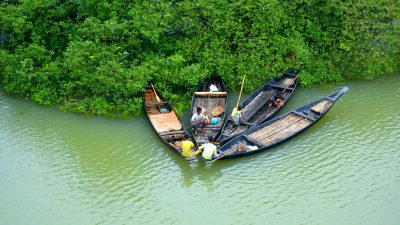The Soviet Union’s Deadly Failure And A Nation Left In Ruins
The Armenia 1988 earthquake was one of the most catastrophic seismic disasters in modern history, striking the region with brutal force on 7 December 1988. The earthquake, measuring 6.8 to 7.0 on the Richter scale, unleashed destruction on an unimaginable scale. With its epicentre near Spitak, the tremor lasted mere seconds but left a permanent scar on the Armenian landscape.
The tremors were felt far beyond the immediate vicinity, affecting over one-third of the country and triggering secondary seismic activities in neighbouring regions. The sheer force of the quake reduced entire towns to rubble in minutes, leaving thousands trapped beneath collapsed buildings. Poor construction standards and fragile infrastructure worsened the devastation, as many structures crumbled under the seismic stress. The disaster underscored the region’s vulnerability to earthquakes, highlighting the urgent need for improved building regulations and disaster preparedness.
The Scale of Destruction: A Nation in Ruins
The Armenia 1988 earthquake left an estimated 25,000 people dead, while another 130,000 were injured. The human toll was immense, with 500,000 people displaced, forced to endure freezing winter conditions without adequate shelter. The city of Spitak was almost completely obliterated, while Gyumri (then Leninakan) and Vanadzor suffered extensive damage, leaving survivors in desperate need of assistance.
Apart from the staggering loss of life, the economic consequences were devastating. The financial cost of the earthquake was estimated to be in the billions, as thousands of buildings collapsed, industries were disrupted, and key infrastructures—roads, bridges, and power stations—were left in ruins. The Armenian economy, already strained under Soviet rule, suffered irreparable setbacks that would take years to recover from.
Causes and Unpreparedness: A Recipe for Disaster
- Seismic Fault Lines: Armenia sits on an active seismic zone, making it prone to earthquakes. The region’s tectonic activity has historically resulted in frequent tremors, but the 1988 quake exposed the dangers of inadequate earthquake monitoring systems.
- Poor Construction Standards: Many buildings in the affected areas were constructed with substandard materials and outdated techniques, failing to meet earthquake-resistant standards. This led to widespread structural collapse, significantly increasing the death toll.
- Lack of Preparedness: Emergency response systems were severely underdeveloped at the time. Rescue efforts were slow, with delays in relief reaching affected communities, compounding the tragedy. The Soviet government’s rigid bureaucracy further impeded effective disaster management.
The Human Cost: Lives Lost and Families Torn Apart
The Armenia earthquake wasn’t just a structural catastrophe; it was a human tragedy of unimaginable proportions. Families were shattered, with entire generations wiped out in seconds. Children, who were in schools at the time of the quake, perished in collapsed buildings. Hospitals overflowed with casualties, and medical teams struggled to cope with the sheer volume of the injured.
Survivors faced profound psychological trauma, as they not only mourned their loved ones but also had to endure the harsh Armenian winter without shelter. Many were left permanently disabled due to crush injuries, while others were forced to flee their homes in search of safety. The emotional scars of the earthquake remain deeply embedded in the collective memory of Armenia.
The Soviet Government’s Response: Too Little, Too Late
The Soviet Union, despite being a global superpower, failed in its initial response to the Armenia 1988 earthquake. Delays in deploying emergency aid and a lack of coordinated efforts hindered relief operations. The disaster highlighted the inefficiencies of the Soviet system, as bureaucratic hurdles slowed down the delivery of essential supplies, medical assistance, and rescue operations.
However, the magnitude of the crisis eventually led to an unprecedented international relief effort, with aid pouring in from Western countries, despite Cold War tensions. The disaster became one of the rare moments where humanitarian aid transcended political divides, as global powers put aside differences to help the devastated Armenian people.
Global Humanitarian Response: The World Steps In
- International Aid Arrives: Countries worldwide, including the United States, France, and Britain, sent rescue teams, medical professionals, and financial support to Armenia.
- Western and Soviet Collaboration: In a surprising turn, the Soviet Union accepted aid from the West, marking a rare moment of unity during the Cold War.
- Charities and NGOs Mobilise: Humanitarian organisations, such as the Red Cross and Médecins Sans Frontières, played a crucial role in providing medical relief, shelter, and food to survivors.
Lessons Learned: Changes in Earthquake Preparedness
The Armenia 1988 earthquake served as a wake-up call for governments and disaster management agencies worldwide. It prompted significant reforms in earthquake preparedness and response strategies, including:
- Stronger Building Regulations: Many countries adopted stricter construction codes to ensure structures could withstand future seismic events.
- Improved Emergency Protocols: The disaster reinforced the importance of rapid response mechanisms and efficient coordination between local and international aid groups.
- Seismic Research and Monitoring: Advances in earthquake prediction technologies were made to minimise the impact of future disasters.
The Long Road to Recovery
Rebuilding Armenia after the earthquake was a monumental task. It took years of reconstruction efforts to restore housing, roads, and essential services. Survivors, many of whom lost everything, faced enormous struggles in rebuilding their lives. Even decades later, the scars of the disaster remain visible in the affected regions, serving as a reminder of the tragic day that forever changed Armenia.
Could It Have Been Prevented? The Controversy Continues
Despite advances in earthquake monitoring, questions remain about whether the disaster’s impact could have been reduced. Many argue that if stricter building regulations had been in place, thousands of lives could have been saved. Others blame government negligence and Soviet-era mismanagement, pointing to delays in aid and failure to enforce safety measures. The Armenia 1988 earthquake remains a tragic lesson in the cost of unpreparedness.
Final Thoughts: A Disaster That Shaped a Nation
The Armenia 1988 earthquake was a disaster of unparalleled scale, leaving an enduring impact on the nation and its people. The catastrophe transformed global earthquake preparedness efforts and highlighted the dire need for proactive disaster management policies. As Armenia continues to rebuild and honour the lives lost, the lessons of 1988 serve as a stark reminder that preparedness is the key to survival.
FAQs
1. What caused the Armenia 1988 earthquake? The earthquake occurred due to tectonic activity along the Spitak Fault, causing sudden and intense seismic movements.
2. How many people died in the Armenia earthquake? Approximately 25,000 people lost their lives, with 130,000 injured and 500,000 left homeless.
3. How did the Soviet government respond to the earthquake? The Soviet government’s response was slow and ineffective, but international aid eventually helped provide relief.
4. What were the long-term effects of the earthquake? The disaster led to stricter building regulations, improved seismic monitoring, and better emergency preparedness worldwide.
5. Has Armenia improved its earthquake preparedness since 1988? Yes, Armenia has strengthened its building codes and emergency response systems to mitigate future earthquake risks.
References:
1988 Armenian earthquake
Earthquakes wreak havoc in Armenia | December 7, 1988 – HISTORY
Feature: Armenia 1988 – Voluntary Action History Society
Disaster in Armenia, 1988 – World History Commons




